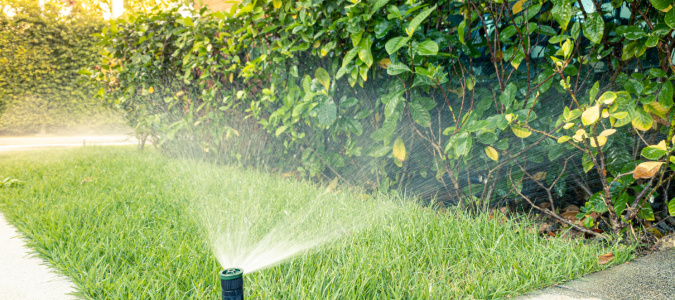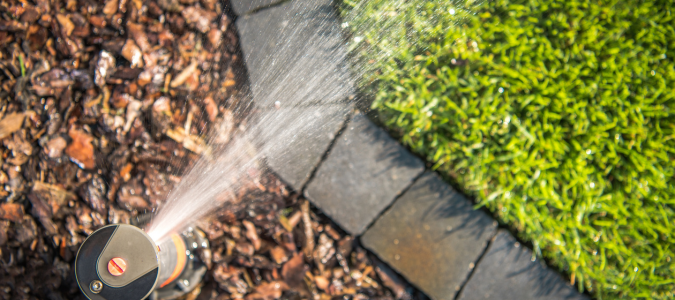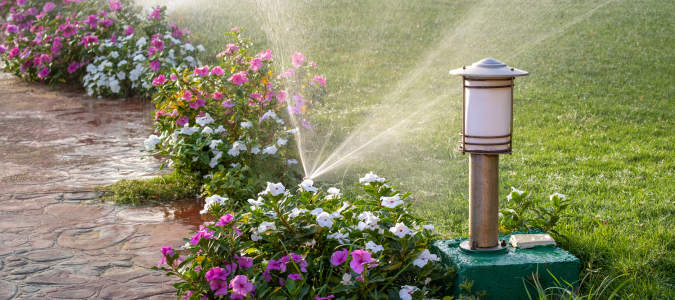When you turn on your showers and faucets, clean water is typically there. But many don’t know that clean water can come into contact with contaminants on its journey to our homes. If you have a sprinkler system, something called “backflow” can happen, causing hazardous materials to enter your home’s water supply line.
That’s why it’s crucial to install a sprinkler system backflow preventer. Contact an irrigation professional to help you choose the best kind for your home.
What Is a Sprinkler System Backflow Preventer?
Before discussing what are the benefits of a sprinkler system backflow preventer, it’s helpful to know what a backflow is. The water inside the supply system usually flows in one direction. But when the water travels the opposite way back through your sprinkler system, it’s called backflow.
The water that comes into your home from the municipality travels at a specific pressure level. But certain factors can cause the pressure to drop, including an open fire hydrant, a broken water main and other disruptions. When the pressure drops, the water flow reverses and causes a backflow. Fortunately, something called a sprinkler system backflow preventer can solve this problem.
What are the benefits of a sprinkler system backflow preventer? This device comes in many forms, and they all work slightly differently. But their ultimate purpose is to create a barrier between clean drinking water and harmful contaminants like human waste, pesticides, fertilizer, chlorine and soap. They ensure that water will only flow in the correct direction.
Most states require homeowners to install backflow preventers. But even if your area doesn’t, it’s still a good idea to do so for peace of mind. If your kitchen sink and drinking water source connect to the water line that supplies the garden hose, consider getting a backflow preventer.
What Are the Types of Sprinkler System Backflow Preventers?
Now that you know the benefits of a sprinkler system backflow preventer, it’s time to get one for your home. However, you might be confused by the many types available. Here’s a breakdown of the different kinds to help you choose the best one for your water pipes:
- Pressure vacuum breakers have an air inlet valve and a spring-loaded check valve. They open to let air in when there’s a drop in pressure to restore equilibrium.
- Atmospheric vacuum breakers use atmospheric pressure and gravity to stop water from going in the wrong direction.
- Reduced pressure zone devices come with pressure-relieving valves and check valves to prevent backflow.
- Double-check valves have two check valves to stop dirty water from contaminating clean drinking water.
These backflow preventers work automatically, so you don’t have to worry about anything after installation. If they record a dip in pressure, they’ll turn on and prevent backflow. They can also let water escape if the pressure inside becomes too high. However, your backflow preventer will only be effective with proper installation and maintenance. Contact an irrigation professional to select the best backflow preventer for your lawn and sprinkler system, install it and check that it’s working correctly. They can even show you how to design a sprinkler system.
How Do You Cap Off a Sprinkler Head?
Sometimes, you don’t need all the sprinkler heads on your lawn. There might be too many in one spot, causing an overwatering issue. Or, there might also be no grass or plants in a particular area, so you’re just wasting water. The best solution is to cap off the unnecessary sprinkler heads.
Sprinkler caps should create a water-tight seal. That will stop water from coming out of the capped sprinkler head. The other working sprinklers will relieve the pressure buildup. Sprinkler caps should be of excellent quality because they must endure a lot of pressure. In addition, the installation work should be flawless for the sprinkler cap to hold up.
That’s why it’s better to leave the task to the professionals. They have the tools and expertise to cap off unwanted sprinklers with a tight seal. They also know which caps are compatible with your sprinkler system. Here’s how they would perform the installation process after turning the water off.
Identify the End of the Water Line
The first step is to find where the water line ends and mark it. It’s crucial to keep the dead end open. Capping it off means the water will have nowhere to go, and the pressure will build in the line. In the winter, the trapped water in that area will freeze and destroy the line. That’s an expensive problem to repair.
Dig Away Dirt and Remove the Sprinkler Head
Next, they will dig two inches of space around the chosen sprinkler head using a shovel or garden trowel. They will keep the loose dirt secure to prevent it from falling into the system. Having a bucket can help contain it. That will also make it easier to dump everything back after the installation. Once the surroundings are clear, a professional will remove the sprinkler head. It should be easy to do so by hand. But if it won’t budge, a pair of pliers usually does the trick.
Screw the Sprinkler Cap On
Before installing the cap, an irrigation pro will clean the riser threads and wrap two to three layers of Teflon tape around it. That will help create a tight seal and prevent leaks. Next, they install the cap by screwing it on with their hands until snug. They are careful not to tighten it too much because that can cause it to crack.
Put the Seal to the Test
The final step is to test the cap’s seal. It shouldn’t be leaking or letting dirt enter the system. A professional will turn the sprinklers on and let them run for a few minutes. There shouldn’t be any water coming out of the capped sprinkler head. Finally, they will turn the water off and return the dirt they dug up earlier.
Capping off sprinkler heads is a complex process that requires several tools. Homeowners shouldn’t attempt it by themselves. Let a professional do it for you to prevent leaks and costly damages.
What To Do if Your Sprinkler System Is Not Working in All Zones
Keeping your lawn in picture-perfect shape isn’t easy. But irrigation sprinklers can help maintain its lushness. They are spread out in different zones on your property to ensure proper irrigation in all areas. But sometimes, a sprinkler system can stop working in all zones. Here are the most common reasons for this issue and how you can troubleshoot:
The Main Valve Is Closed
If the sprinkler system doesn’t work in all zones, check if the main valve is open. It may seem like an obvious solution, but many homeowners overlook it. The main valve might be between the sprinkler controller and your home’s water supply. If it’s not, it might be outside in a box near one of the faucet bibs.
Destructive Roots Are Choking the Pipes
Bush and tree roots can place strain on sprinkler lines. Over time, they can start wrapping around pipes and choke them. Chopping away destructive roots is only a band-aid solution. They’ll eventually grow back and cause more damage. The most effective solution is to take down the bush or tree itself.
The Water Pressure Is Too Low
Low water pressure is a common cause of malfunctioning sprinkler systems. Increasing your home’s water pressure should get your sprinklers to work in all zones again. However, you might have another problem if the water pressure inside your house is normal but low inside the sprinkler system. It could mean that the backflow preventer valves aren’t fully open. Have an irrigation professional check your system.
The Timer Is Malfunctioning
The timer might be to blame for your sprinkler issues. Functioning sprinkler timers send a 24-volt electric impulse down a lead wire to the valve. Contact a professional who can use a voltmeter to see if yours is doing this correctly.
The Solenoid Valve Is Malfunctioning
If the timer isn’t the problem, the solenoid valve might be the culprit. It’s responsible for controlling the water flow throughout the sprinkler system. If you suspect yours is malfunctioning, it’s better to replace it than try to repair it.
The Common Wire Is Malfunctioning
If there are no problems with the timer and solenoid valve, the common wire might be causing the issue. If you do a lot of yard work, someone may have accidentally cut it. Unfortunately, finding a cut wire is far from easy. Professionals can effectively diagnose and solve this issue.
There are many possible reasons behind a malfunctioning sprinkler system. It can be overwhelming for an inexperienced homeowner to get to the root of the problem. Save yourself the headache and let an irrigation professional take over.
Contact a Professional for Your Sprinkler System Troubles
A sprinkler system can do wonders for the beauty of your lawn. But it can also develop complex problems that may be hard to resolve yourself. If you’re dealing with any issues, it’s best to leave it to the professionals. Irrigation technicians can assess the situation and provide the most effective solution. They can also fix other issues, like a sprinkler valve leaking.
ABC Can Care For Your Sprinklers
Take the guessing game out of designing and caring for your sprinkler system by contacting ABC Home & Commercial Services. Our sprinkler system repair experts can ensure your lawn stays healthy and green. We also offer landscaping services so that you can keep your lawn green in the summer heat.


